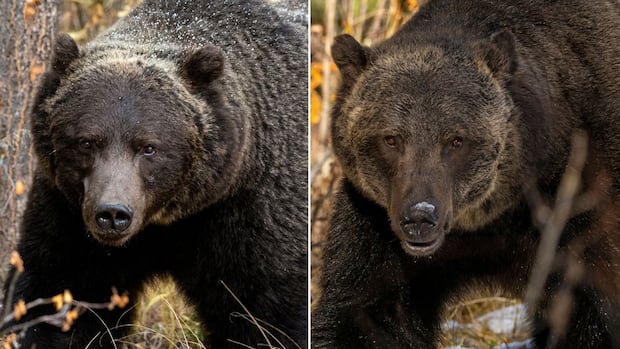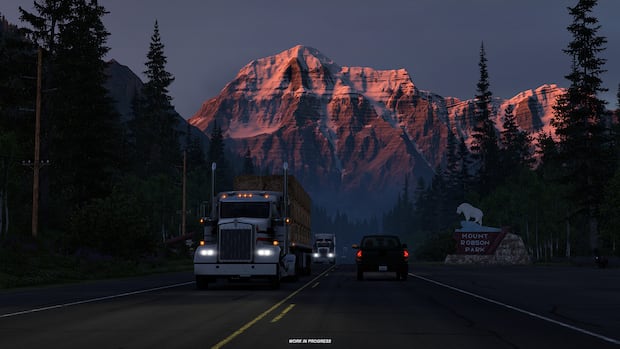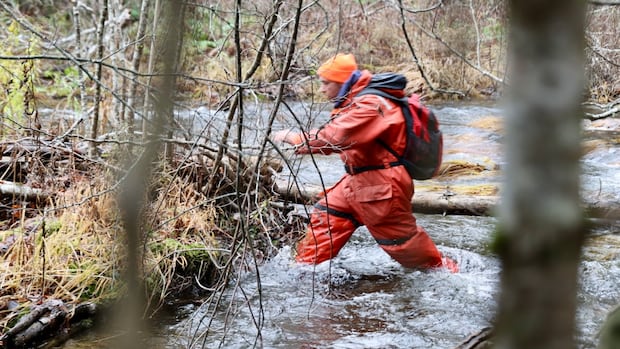Listen to this article
Estimated 4 minutes
The audio version of this article is generated by text-to-speech, a technology based on artificial intelligence.
Jason Leo Bantle has witnessed Banff’s grizzly bear hierarchy firsthand.
He’s been documenting bear No. 122 — better known as The Boss — for a decade now, during which he’s watched the notorious grizzly firmly establish himself as the Bow Valley’s most infamous bruin.
“My experience with The Boss overall, over these 10 years, has been a bear that has gotten more comfortable with humans, more comfortable in his landscape and the abilities to navigate situations that are quite complex,” he said.
The Boss is believed to be in his mid-to-late twenties, making him quite old by wild grizzly bear standards. He’s been estimated to weigh somewhere between 650 and 700 pounds.
 Bear No. 122, or The Boss, pictured feeding on berries in October 2025. (Jason Leo Bantle)
Bear No. 122, or The Boss, pictured feeding on berries in October 2025. (Jason Leo Bantle)As far as Bow Valley bears go, he’s got an impressive resumé, which includes surviving getting struck by a train and shutting down a popular Banff trail when he was observed eating a black bear there.
“He has a home range of over 2,500 square kilometres,” Bantle said. “This bear has a story and, well, he's a grandfather now. Could you imagine? He could sit down with his grandkids and have conversations that would just be awe-inspiring for all of us.”
But while The Boss is still on top of the Bow Valley bear hierarchy, he’s got competition — largely in the form of bear No. 136.
“Split Lip is now in The Boss's territory,” Bantle said. “Seeing Split Lip two or three years ago was a rare occurrence.”
 Bear No. 136, or Split Lip, pictured feeding on berries in Banff National Park in October 2025. (Jason Leo Bantle)
Bear No. 136, or Split Lip, pictured feeding on berries in Banff National Park in October 2025. (Jason Leo Bantle)Bantle recalls encountering Split Lip last month, only a few days after seeing The Boss nearby. He said sightings of Split Lip have been happening more frequently in the Bow Valley in recent years.
“Myself and other people are having a lot more experiences with Split Lip in areas where The Boss was typically only seen,” Bantle said.
“That's indicative that Split Lip is moving in on The Boss's territory, and The Boss is having dominance fights with Split Lip, and those dominance fights maybe are sometimes going in Split Lip’s favour now.”
WATCH | Showdown between The Boss, Split Lip caught on camera:It's a wildlife photographer's dream to see a showdown between two of Banff's most notorious grizzlies (from a safe distance, of course!).Bantle said recent facial scars he’s seen on The Boss are a sign that he’s been facing competition.
“Some of these other bears are taking chances, or think that they can beat The Boss and they're willing to fight with The Boss, and his defence is not as strong,” Bantle said.
 The Boss in October 2025. Photographer Jason Leo Bantle says the scars visible under the bear's eye are recent. (Jason Leo Bantle)
The Boss in October 2025. Photographer Jason Leo Bantle says the scars visible under the bear's eye are recent. (Jason Leo Bantle)If The Boss begins to avoid fights he feels he's less likely to win, and starts to surrender territory, it could signal to female bears that he’s no longer the best choice to mate with, Bantle said — and that would make it hard for him to remain the Bow Valley’s top bruin.
“And he will slowly stay in his territory, but he will not have all the luxuries that he's had up to this point in time, of being that dominant bear,” Bantle said.
Bantle’s recent photos of Split Lip on a snow-covered landscape are a reminder that some bears haven’t gone into hibernation yet.
Nick de Ruyter, program director of the BioSphere Institute's WildSmart program, said while it's hibernation season for most bears in the Bow Valley, some stay active and awake well into the winter months.
 Split Lip makes his way through the snow in Banff National Park on October 2025. (Jason Leo Bantle)
Split Lip makes his way through the snow in Banff National Park on October 2025. (Jason Leo Bantle)Bear activity at this time of year depends on environmental factors, including weather, temperature and food availability.
“Based on how good of a berry crop we had this summer, I think that a lot of the bears will be going into their dens fat and happy and healthy,” de Ruyter said.
But while bear activity appears to have decreased, de Ruyter said carrying bear spray year-round is the best way for hikers and cross-country skiers to stay safe in the event of an encounter with a bear, or other predators like wolves, coyotes and cougars.











